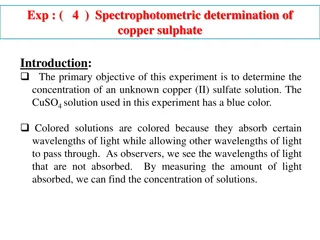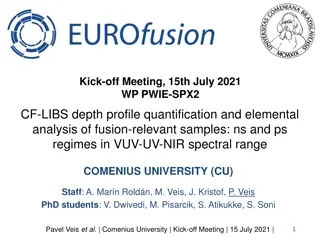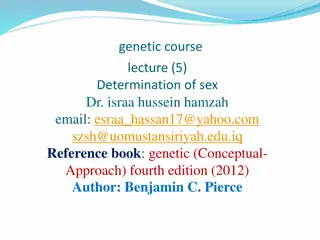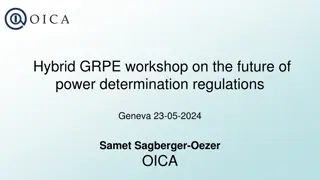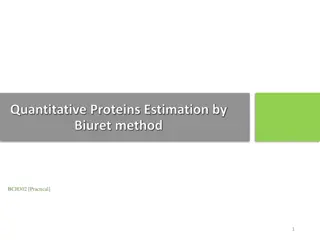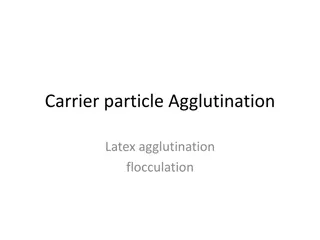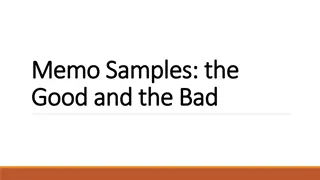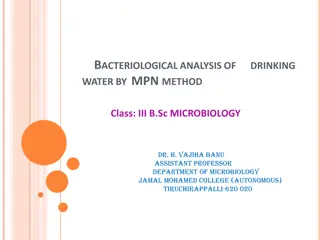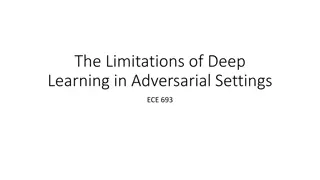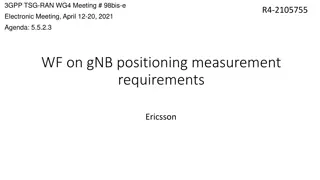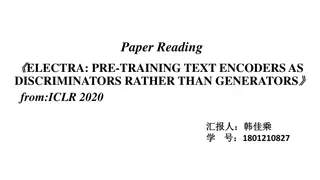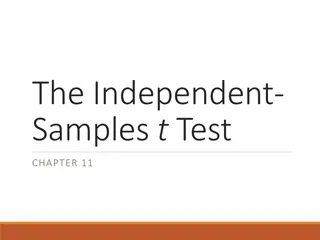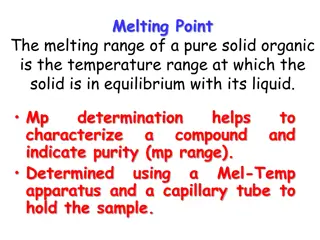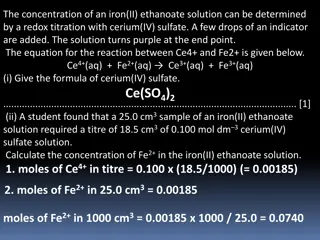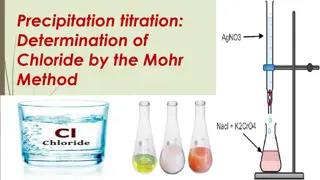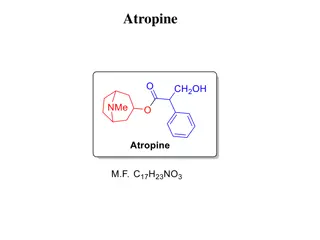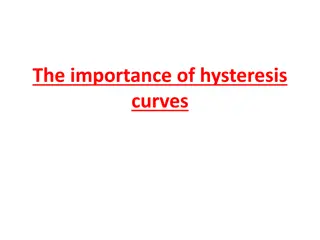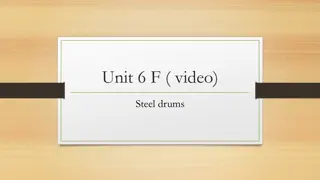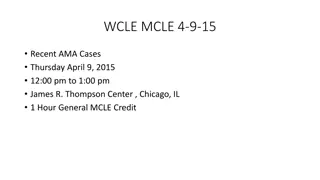Spectrophotometric Determination of Cr and Mn in Steel Samples
This experiment aims to determine the concentrations of manganese and chromium in steel samples by converting Cr3+ and Mn2+ ions to light-absorbing forms, followed by spectrophotometric measurements at specific wavelengths. Steel samples are oxidized, dissolved, and further oxidized to form dichromate and permanganate ions. Wavelength selection is crucial, with 440nm for dichromate and 525nm for permanganate being identified as the wavelengths of maximum absorption. By ensuring low ion concentrations at these wavelengths, potential interference is minimized, enabling accurate spectrophotometric analysis.
Download Presentation

Please find below an Image/Link to download the presentation.
The content on the website is provided AS IS for your information and personal use only. It may not be sold, licensed, or shared on other websites without obtaining consent from the author. Download presentation by click this link. If you encounter any issues during the download, it is possible that the publisher has removed the file from their server.
E N D
Presentation Transcript
EXP.(4 ) Spectrophotometric determination of Cr and Mn In steel sample The purpose of this experiment is to simultaneously determine the concentration of manganese and chromium in a mixture by spectrophotometrically measuring the absorbance at two specified wavelengths . Steel consists mainly of iron and small amounts of carbon plus alloying metals like manganese, chromium, vanadium. These added metals make the steel harder and stronger but reduce ductility 1
In many samples, Cr and Mn occur as cations (Cr3+and Mn2+, respectively) and cannot be determined by absorption spectrometry because they are not able to absorb light to a large enough extent in this form. That is why these ions should be first converted to light- absorbing forms (Cr2O72- and MnO4-, respectively) by suitable chemical reactions. The steel samples for the spectrophotometric determination of chromium and manganese were prepared by oxidation with acid and persulfate. The steel samples were placed in concentrated sulfuric acid in order to dissolve chromium metal and in nitric acid to dissolve manganese metal. The dissolution was followed by further oxidation of chromium to dichromate and manganese to permanganate.
2Cr+3 + 3S2O8-2 + 7 H2O Cr2O7-2 + 6SO4-2 + 14 H+ 2Mn+2 + 5S2O8 -2 + 8H2O 2MnO4- + 10SO4-2 + 16 H + Add 0.5 gm KIO4 ( The rule of addition of KIO4 to ensure complete oxidation of the manganese and to eliminate the fading of the permanganate which occurs when persulfate is used alone ) 2Mn +2 + 5IO4 - + 3 H2O 2MnO4- + 5 IO3 - + 6 H + 3
Wavelength selection Before analysis, the wavelengths of maximum absorption for permanganate and dichromate were determined by taking separate spectral scans of each sample solution containing permanganate or dichromate from 400nm to 800nm using the visible spectrophotometer. Based on the absorption spectra the wavelengths of maximum absorption ( max) for permanganate and dichromate were 525nm and 440nm, respectively. According to Fig. 1, the dichromate ion spectrum shows a shoulder at 420 nm. This is therefore the selected wavelength for the dichromate ion. 4
According to Fig. 2, the permanganate ion spectrum shows a maximum at 525 nm. This is therefore the selected wavelength for the permanganate ion. 5
If the concentration of these ions is low enough at each of the selected wavelengths, light is absorbed by only one of the above ions (see Figs. 1 and 2) and no mutual interference occurs. For example, dichromate absorbance at 545 nm is negligible (Fig. 1) and, if permanganate is also present, only this one absorb light at this wavelength. Lambert- Beer law can therefore be applied independently to each ion. At higher concentrations, mutual interference occurs. In this case, a different approach should be employed in order to determine the concentration of each ion. 7
nm A steel A KMnO4 A K2Cr2O7 440 - - - 545 - - - Calculation : ( 440 ) ACr = Cr bc Cr = ? A Mn = Mn bc Mn = ? ( 545 ) A Cr= Cr bc Cr = ? A Mn= Mn bc Mn = ? ( 440) AT (steel sample)= b c Cr+ b c Mn .. 1 (545) AT (steel sample)= b c Cr+ b c Mn .. 2 8
procedure EXP. ( 2 ) Spectrophotometeric determination of chromium and manganese in steel . 1. Weigh ( 0.1 gm) of sample . Dissolve it in ( 5 ml ) of HNO3 ( 1 : 1 ) .Add ( 20 ml ) ( D.W) boil for ( 5 10 ) min . 2. Cool the solution and add slowly about ( 0.5 gm) of K2S2O8 or (NH4)2 S2O8 boil for ( 5 min ) . 3. Dilute to ( 10 ml) with ( D.W) and then add ( 5 ml) of conc. H3PO4. 4. Add ( 0.5 gm) of KIO4 heat until the violet colour appeared. Filter the ppt . then dilute to (50 ml) in volumetric flask. 9
5.Prepared standard solution of KMnO4 ( 1 x 10 -4 M ) in ( 100 ml)and K2Cr2O7 ( 1 . 10 4 M ) in ( 100 ml) . 6.Measure the absorbance of the solution at max (440 nm) for Cr and ( 545 nm) for Mn for standard solution and the sample. A sample (steel) KMnO4 K2Cr2O7 At 440 nm At 545 nm A T= 1 C Mn+ 2 C Cr ( 1) 440 nm A T= 3C Mn+ 4C Cr .. ( 2) 545nm 7.Calculate the % percentage of each ( Cr , Mn ) in sample. 10







